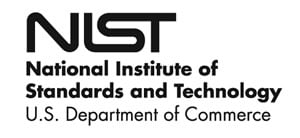RSS feed source: National Science Foundation
A group of researchers from the University of Kentucky, The University of Tennessee and Indiana University, including those supported by the U.S. National Science Foundation, have collaborated with scientists from the U.S. Forest Service and others to produce the first complete genome for the white oak (Quercus alba), a tree that provides large amounts of timber and is the primary species used in barrels for aging spirits.
RSS feed source: National Science Foundation
Rumors of the ongoing death of software development — that it’s being slain by AI — are greatly exaggerated. In reality, software development is at a fork in the road: embracing the (currently) far-off notion of fully automated software development or acknowledging the work of a software developer is much more than just writing lines of code.
The decision the industry makes could have significant long-term consequences. Increasing complacency around AI-generated code and a shift to what has been termed “vibe coding” — where code is generated through natural language prompts until the results seem to work — will lead to code that’s more error-strewn, more expensive to run and harder to change in the future. And, if the devaluation of software development skills continues, we may even lack a workforce with the skills and knowledge to fix things down the line.
This
Click this link to continue reading the article on the source website.
RSS feed source: National Science Foundation
Our smart home devices can be compromised, but you can take a few simple steps to reduce your risks.
Click this link to continue reading the article on the source website.
RSS feed source: National Science Foundation
Executive summary
Many networks have a gap in their defenses for detecting and blocking a malicious technique known as “fast flux.” This technique poses a significant threat to national security, enabling malicious cyber actors to consistently evade detection. Malicious cyber actors, including cybercriminals and nation-state actors, use fast flux to obfuscate the locations of malicious servers by rapidly changing Domain Name System (DNS) records. Additionally, they can create resilient, highly available command and control (C2) infrastructure, concealing their subsequent malicious operations. This resilient and fast changing infrastructure makes tracking and blocking malicious activities that use fast flux more difficult.
The National Security Agency (NSA), Cybersecurity and Infrastructure Security Agency (CISA), Federal Bureau of Investigation (FBI), Australian Signals Directorate’s Australian Cyber Security Centre (ASD’s ACSC), Canadian Centre for Cyber Security (CCCS), and New Zealand National Cyber Security Centre (NCSC-NZ) are releasing this joint cybersecurity advisory (CSA) to warn organizations, Internet service providers (ISPs), and cybersecurity service providers of the ongoing threat of fast flux enabled malicious activities as a defensive gap in many networks. This advisory is meant to encourage service providers, especially Protective DNS (PDNS) providers, to help mitigate this threat by taking proactive steps to develop accurate, reliable, and timely fast flux detection analytics and blocking capabilities for their customers. This CSA also provides guidance on detecting and mitigating elements of
Click this link to continue reading the article on the source website.



